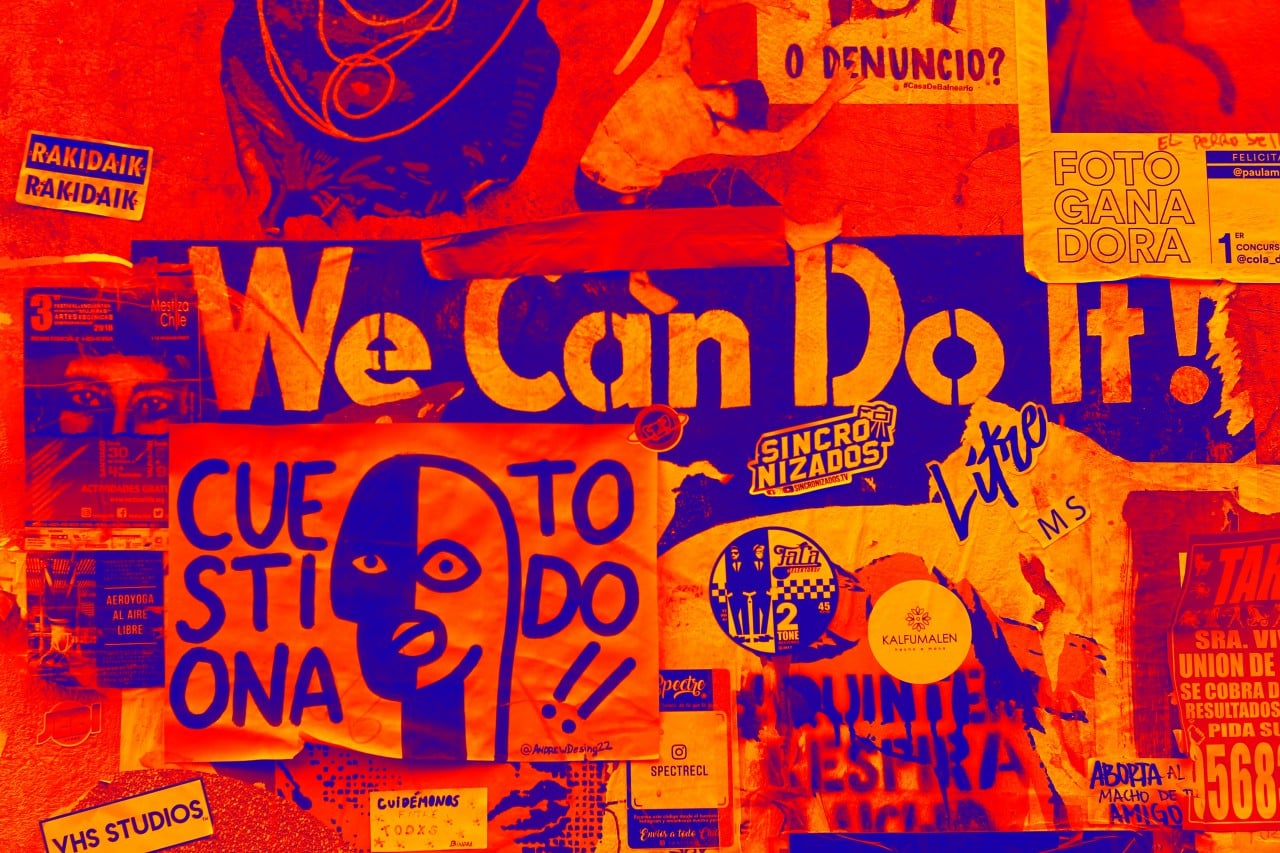THE RISE OF NFT ART

Sue Dhillon is an Indian American writer, journalist, and trainer.
The rise of NFT art begs the question – how much would you pay for a jpeg?
A dollar? Ten dollars? Nothing? How about $69 million.
While artists dream of their work fetching such a price, for the digital creator Beeple that’s exactly what happened when his magnum opus, Everdays, went to auction at Christies. Rather than an ornately framed oil painting or delicate sculpture, the highest bidder received a copy of the image and a digital file called a non-fungible token (NFT), proving ownership of the piece. Despite the artwork now being “owned,” search Google images, and you can freely download a copy for yourself. Go to Beeple’s Instagram, and you’ll see it even features the same surrealist images that made up his Everydays mosaic.
Welcome to the weird and wonderful world of NFT art: an emerging creative space that’s empowering artists and raising a lot of questions about exactly what it means to own something.
While the idea of spending fortunes on intangible tokens may seem absurd, the market is booming. Looking at the latest statistics on NonFungible.com paints a promising picture. In 2020, the entire NFT market was valued at around $250 million. Twelve months later and the first quarter of 2021 has seen $2 billion in sales and $765 million in the last month alone.
HOW DO NFTs WORK?
Go to an art gallery, buy a painting, and you’ll be given a certificate of authenticity and a receipt. For most people, this is sufficient proof that you now “own” that piece of art. For digital art, however, the issue is a little more tricky.
When your artwork can be copied and pasted to infinity, the idea of selling a piece has always seemed fanciful. Why would anyone buy an image when someone else can just go and download a copy for free?
Until NFTs, this was the problem facing digital artists. NFTs now solve the problem by issuing what is essentially a deed of ownership, leveraging cryptocurrency technology. But how do NFTs work exactly?
Currently, almost all NFTs exist on the Ethereum network, known as a blockchain. Ethereum is an alternative to Bitcoin, with both employing a tamper-proof ledger that keeps track of exactly who owns what.
Unlike Bitcoin and Ethereum’s own currency, however, NFTs are not fungible. Money, for example, is fungible. A single dollar bill is worth the same as any other, just as a single Bitcoin is always worth exactly one Bitcoin. With non-fungibletokens, though, each is worth a different amount, with their value determined by the highest bidder.
To turn artwork into NFTs, artists sign up to various marketplaces and “mint” their pieces. This process can cost anything up to $200, with the artwork then existing “on-chain,” ready to be bid upon.

ART FOR A DIGITAL GENERATION
NFTs are, in part, a natural progression for the art world. Millennials and younger have grown up with digital ownership and are comfortable owning something they can’t physically hold. With a childhood background full of mp3s, app stores, and downloadable games, the idea of now selling and owning digital art as an adult is not as outlandish as it first appears.
One such person making a name for themselves in the NFT space is 18-year-old Victor Langlois, better known as Fewocious. Their story started three years ago when Victor found solace from his abusive home life, uploading classroom doodles to the internet. Finding some moderate social media success, Victor soon began selling paintings, making a modest amount of money from his physical artwork. It was through one of his customers that Victor discovered the rabbit hole of NFTs in 2020, soon recognizing its potential to transform his life.
Using his carefully saved dollars, Victor bought himself an iPad and began to create digital artwork to sell on NFT platforms. His very first NFT piece, enigmatically named She Makes Me Feel Alive, is a typical teenage piece about falling in love for the first time. With an already established following, the piece sold for 10 ETH, the equivalent of around $6000 at the time, proof enough for Victor to continue.
Since this time, his NFT success has skyrocketed, allowing him to escape to Seattle and truly be himself. In NFTs like Overthinking Again ($345,150), we see Victor struggling with gender identity issues, anxiety, and becoming overwhelmed. Pre-NFTs, such pieces may have gathered a few likes and shares but would have otherwise not brought artists any financial reward.
For young artists like Victor, the NFT scene represents freedom, allowing them to make a substantial living where they may have otherwise gone unnoticed.
NFTs OFFERING NEW OPPORTUNITIES
And it’s not just the young making up the NFT vanguard. Artists such as Trevor Jones, now in his fifties, has broken all kinds of records in the NFT space infusing digital energy into his traditional oil paintings. Originally from Canada and now settled in Scotland, Jones found himself in his forties with no recognition or financial success, despite his immense talent.
Conventional methods of generating income from art involve hiring gallery space and holding solo exhibits. After taking out overheads and the gallery’s cut, an exhibit that could take a year to put together would rarely be worth the effort. While the life of a struggling artist is often seen as a romantic image, the reality is it takes its toll on your mental health, with the growing pressure to cave in and give up the pursuit of art.
As a last-ditch attempt, Jones began to experiment with QR codes, integrating augmented reality into his artwork. The gamble paid off and over the next few years he began to carve out a niche for himself with his World Leaders series of portraits and a stealth exhibit at the Scottish National Portrait Gallery, combining technology with art.
Thanks to a fortunate meeting with the CEO of the NFT marketplace, KnownOrigin, Jones was then introduced to the idea of selling digital art. Despite not fully understanding the technology, Jones saw an opportunity to get in at the ground floor. Inspired by Picasso, Jones dipped his toe into the NFT waters in December 2019 with EthGirl, a collaboration with another crypto artist called Alotta Money. The animated piece sold for 72 ETH, around $10,000 at the time and broke platform records. EthGirl is a perfect exemplification of how much this scene has grown over the last two years, with the piece now listed for the price of 2575 ETH, well over $8 million at today’s prices.
Spurred on by his success, Jones continued to break records over 2020 and into 2021. More aware than most of just how difficult it is to survive as a digital artist, Jones has used his success to help promote emerging artists to enter the NFT scene, using his Twitter account to encourage and advise others.
NFT SCARCITY AND OWNERSHIP
For many, NFTs represent a way for artists to be sufficiently compensated for their hard work and creativity. Digital artists have, for the longest time, been largely underappreciated by the art world with their work so readily available to share.
This lack of scarcity was the unfortunate side-effect of creating digital art. The more popular your art, the more readily available it was for others to download.
With the introduction of NFTs, digital pieces can now share the same status that original artworks have. While you can wander into the Louvre’s gift shop and buy a high-quality print of the Mona Lisa, there is still only one original painting sitting quietly in the Salle des États. In the same way, NFTs allow digital artists to create scarcity and establish provenance through the crypto-ledger.
Pushing the boundaries of this concept is the controversial British artist Damien Hirst. No stranger to provocation, Hirst’s latest project is called The Currency and involves the creation of two artworks. Representing the old guard is 10,000 A4 sheets of paper, covered in colorful, hand-painted dots. Portraying the artistic avant-garde is an equal and opposing NFT corresponding to each sheet of paper. After purchase, buyers have just 12 months to decide which they want to keep: the physical paper, or an NFT, with the other destroyed.
Hirst’s project brings into sharp focus the issue of ownership, forcing collectors to answer the question whether they value the physical or the digital more. It also raises the question of where collectors see the art world going. Is holding a physical copy of a Damien Hirst piece worth more than an equivalent NFT? And where does this value come from, the work itself or the eyes of the community?
The project distills the issues down to their base elements, establishing whether our predilection for the physical has been a matter of historical necessity, or something inherent.
WHERE NEXT?
For many, NFTs are still a bewildering concept. And it’s not difficult to understand why. The idea of owning pixels is not something we are used to, with some expecting the NFT bubble to burst sooner rather than later.
Outside of the issue of value, NFTs also have an image problem when it comes to climate change. Every time an NFT is minted, sold or exchanged, a significant amount of energy is required on behalf of the network’s miners. The carbon-footprint of the growing NFT market has many within (and without) the scene concerned, with the Ethereum network already using the same amount of electricity as Libya.
While the controversy still swirls, there are proposed solutions, including a switch to a different security measure called proof-of-stake. This method involves the network being maintained by stakeholders and uses a fraction of the computational power. While the Ethereum network has still not deployed this change, it’s expected in the near future and should reduce the need for computers to solve the complex cryptographic puzzles that cause enormous emissions.Despite carbon concerns and opposition from those who prefer the analogue form, the NFT scene is likely to see continued growth thanks to its tightknit community. With blockchain technology continuing to shake up the world of art, the benefit to artists themselves is undeniable.
This article was written by contributing writer Matthew Wiliams.
Matthew is a general content writer with a focus on lifestyle and technology.
Check out another artist we love Yoyoi Kusama – The Greatest Selling Female Artist Of All Time


